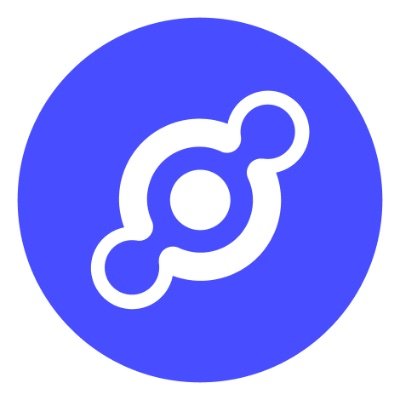How the DePIN project utilizes Solana to build a decentralized physical network
Written by: Rahul Kulkarni
Compiled by: Baihua Blockchain
1. What is DePIN?
Decentralized Physical Infrastructure Network (DePIN) is the name of a blockchain network that uses tokens to incentivize communities (rather than companies) to build physical infrastructure networks from scratch (such as mobile, electric vehicle charging, telecommunications, etc.).
2. Exploring the Connection Between DePIN and Blockchain
In the realm of large-scale infrastructure, with the emergence of DePIN, we are witnessing a shift from the traditional top-down approach. Unlike the conventional model led by central authorities, DePIN advocates for decentralization, distributing decision-making power throughout the network to enhance adaptability. So, why emphasize blockchain? It turns out that blockchain technology ensures data security through transparency and immutability, perfectly complementing DePIN. Smart contracts enhance efficiency by automating processes. This deviation from centralization not only makes the network more inclusive but also helps prevent vulnerabilities. In embracing DePIN, infrastructure design takes a significant step towards a more resilient, decentralized, and self-coordinated future.
The downside of this model lies in its inherent incentive structure, which encourages services primarily for those with the highest financial capability. Consequently, this leads to a concentration of resources and power dynamics, leaving some end users underserved and at a disadvantage throughout the program.
3. How Solana Helps Address This Issue
DePIN projects leverage Solana to build decentralized physical networks, fully utilizing its scalability and low gas fees. Solana's architecture features localized fee markets and parallelization, enhancing robustness and scalability, making it an ideal choice for these projects.
DePIN proposes a strategy that involves incentivizing others to join, thereby sharing the workload and providing a pathway to achieve scalable functionality. This approach draws inspiration from peer-to-peer (P2P) networks, which form the backbone of many permissionless blockchains, providing a solid framework for effective project scaling.
Here, when we juxtapose the fundamental structures and utilization of Solana, Helium Network, and Render Network, you can observe the similarities among them.

Let’s delve into some innovative projects that have chosen Solana as their core infrastructure for scaling.
4. Teleport
Teleport is the open-source and decentralized version of Uber. They are building a global network of drivers and passengers by incentivizing network operators in real-time.
They are turning ride-sharing into a protocol, whereas centralized ride-sharing services typically require the market to set fair prices. Instead, they set prices themselves and maximize the value they can extract. Redesigning ride-sharing as a decentralized system means more money flows to drivers, passengers pay less for each ride, and more money stays in the local economy.

The key difference lies in Teleport's commitment to decentralizing and providing real-time incentives for its network operators. Unlike their centralized counterparts with autonomous pricing, Teleport supports a peer-to-peer system where market dynamics determine fair pricing. This unique approach ensures that more funds flow directly to drivers, allowing passengers to benefit from reduced costs per ride and creating a significant economic impact at the local level.
5. Helium
Helium is well-known in the Solana ecosystem and is one of the largest DePIN projects on Solana to date.
Helium is an exciting blockchain project aimed at decentralizing the way smart devices communicate with each other. Helium initially started as an IoT network for communication between smart devices. Coverage is provided by hotspot devices that also serve as wireless access points and miners.

The Helium Network has expanded to hundreds of thousands of such hotspot devices, providing extensive coverage in the United States, Europe, and most other major urban areas. It is a significant player in the Long Range Wide Area Network (LoRaWAN) industry.
The team successfully migrated to Solana in the second quarter of this year. Shortly thereafter, Nova Labs announced the launch of Helium Mobile's unlimited plan, offering unlimited texting, calling, and data services for just $5 a month, currently available only in the United States. This strategic move aims to leverage Solana's scalability, low transaction costs, and high performance, including its rapid transaction throughput and energy-efficient consensus mechanism. Migrating to Solana provides Helium Network with critical advantages: it enables IoT and mobile networks to support larger scales, facilitates more complex coverage proof algorithms, and enhances the network's resilience, making it a more robust solution for demand applications.
6. Render
Render Network is the first decentralized GPU rendering platform that allows artists to scale GPU rendering work on-demand to high-performance GPU nodes around the world.
The Render Network aims to provide a platform for various computational tasks (from basic rendering to machine learning training to complex computations) that facilitates rapid and efficient operations without errors or delays in a blockchain-based peer-to-peer network while ensuring ownership security.
The Render team has deployed a new token called RENDER on Solana, allowing the community to participate and earn rewards by providing GPUs to users. 1.14 million RNDR tokens have been allocated to participants for migrating from ETH to Solana and covering gas fees.
Jules Urbach, founder and architect of Render Network, stated: "Moving Render's core infrastructure to Solana is a watershed moment that unlocks major new features like real-time streams and dynamic NFTs."
"As we continue to build scalable and decentralized metaverse infrastructure, Solana's incredible transaction speed, low costs, and commitment to network-scaled architecture make it an ideal fit for the Render Network."
These projects center around Solana to achieve higher availability, scalability, faster execution speeds, and lower transaction gas fees. Solana has consistently been the preferred choice for entrepreneurs due to its speed and lower fees.
7. Conclusion
In summary, the relationship between DePIN projects and Solana reflects the transformative potential of decentralized infrastructure. By committing to decentralization, Teleport, Helium, and Render Network leverage Solana's scalability and efficiency to redefine traditional models in ride-sharing, IoT communication, and GPU rendering.
Solana's role as a speed catalyst, reducing transaction costs and providing network-scaled architecture makes it the preferred choice for entrepreneurs navigating a decentralized future. As these projects seamlessly integrate with Solana, they not only address the limitations of centralized systems but also pave the way for building a more inclusive, resilient, and dynamic decentralized physical network.













